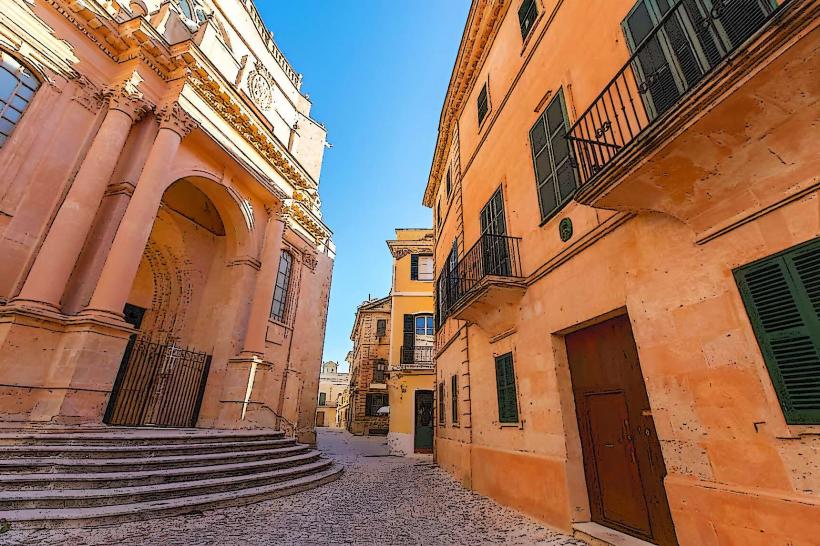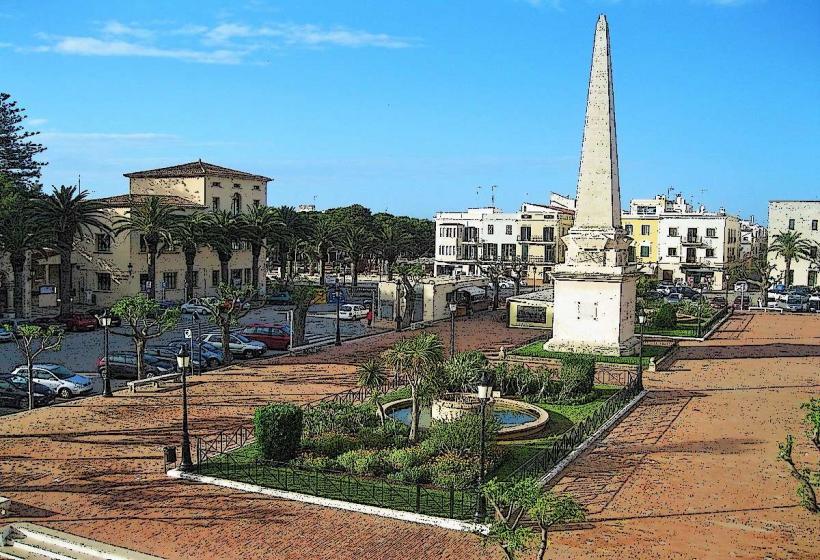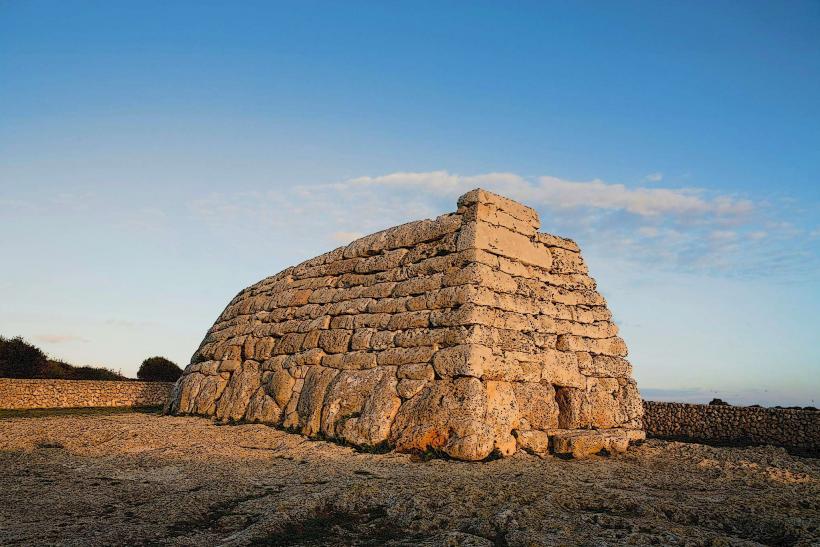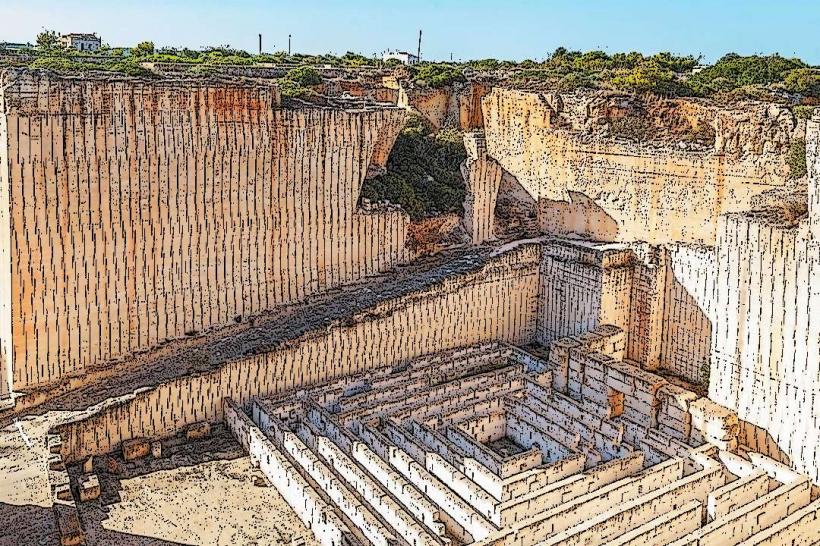Information
Landmark: Cathedral of MenorcaCity: Ciutadella
Country: Balearic Islands
Continent: Europe
The Cathedral of Menorca, also known as Catedral de Menorca, is located in the town of Ciutadella, Menorca’s second-largest city in the Balearic Islands, Spain. It is one of the island's most important religious and architectural landmarks. The cathedral's history and architecture reflect Menorca’s rich cultural heritage, blending elements of Gothic, Baroque, and Neoclassical styles. Here’s a detailed look at this magnificent structure:
1. Historical Background
- Original Construction:
The site of the cathedral was originally home to a Moorish mosque. Following the Christian reconquest of Menorca in 1287, the mosque was converted into a Christian church under the reign of King Alfonso III of Aragon. The Cathedral of Menorca was constructed on the same site over a period of time, starting in the 14th century. - Evolution Over Time:
The cathedral’s construction was completed in several stages, and it has undergone multiple renovations and expansions throughout the centuries. Originally built in a Gothic style, it was later modified with Baroque and Neoclassical elements, especially in the 17th and 18th centuries. - Status as Cathedral:
It became the Cathedral of Menorca after the island was officially made part of the Roman Catholic Diocese of Menorca, a territory established in 1231. It remains the seat of the diocesan bishop today.
2. Architectural Features
- Gothic Beginnings:
The cathedral’s initial structure was Gothic, evident in the large pointed arches and the general design of its nave and aisles. The cathedral's high vaulted ceilings and pillars showcase the grandeur typical of Gothic architecture. - Neoclassical Facade:
The Neoclassical facade was added during the 18th century, transforming the exterior appearance. The main entrance is adorned with pilasters, a pediment, and a large baroque-style portal. - Main Nave and Interior:
The interior of the cathedral is marked by three naves, with the central nave being wider and higher than the side aisles. Ribbed vaults and pointed arches create a sense of space and height. The cathedral's altarpiece features a combination of Gothic and Baroque elements. - Chapel of the Holy Sacrament:
One of the most significant parts of the cathedral is the Chapel of the Holy Sacrament, located in the transept. The chapel is known for its beautiful altar and its serene atmosphere, where visitors can reflect in a peaceful setting. - Stained Glass Windows:
The cathedral is also known for its stained glass windows, which date back to the 19th century. These windows fill the interior with vibrant light, creating a warm, inviting environment. The rose window at the cathedral's main entrance is one of its most famous features.
3. Interior Highlights
- Main Altar:
The main altar of the cathedral is dedicated to Saint Mary, the patron saint of the cathedral. It is surrounded by intricate carvings and golden details, with a large central painting of the Virgin Mary above the altar. - Baptismal Font:
The baptismal font is another key feature of the cathedral, reflecting its long-standing role in the religious life of Ciutadella. It is a large stone structure, with decorative elements that highlight the importance of baptism in the Christian faith. - Baroque Influence:
Baroque influences are seen in the ornate altars, particularly in the Chapel of Saint Anne and other chapels along the side aisles. The altarpieces in these chapels feature gilded wood and detailed sculptures, typical of the Baroque style.
4. Important Artistic Features
- Eclectic Altarpieces:
While the cathedral is primarily Gothic, it houses Baroque altarpieces and works of art from later periods. The altarpieces feature scenes from the lives of saints and other religious figures, created with great attention to detail and emotion. - Statues and Sculptures:
The cathedral also contains several sculptures of saints, religious figures, and scenes from the life of Christ. Many of these pieces were crafted in the Baroque style, with dramatic expressions and intricate details.
5. Cultural and Religious Significance
- Religious Celebrations:
The Cathedral of Menorca plays an important role in the religious life of Ciutadella and Menorca. It hosts regular Mass services, particularly on Sundays and during religious holidays like Christmas and Easter. - Fiesta de Sant Joan:
One of the cathedral’s most significant cultural events is the celebration of Fiesta de Sant Joan (Festival of Saint John) in late June. This festival, which is held in Ciutadella, is marked by processions and religious rites that culminate at the cathedral. Local residents and visitors gather at the cathedral for special services to honor Saint John. - Pilgrimages and Local Traditions:
As a significant religious site, the cathedral is a focal point for pilgrimages and local traditions, especially during the annual Saint Mary’s feast day in August.
6. Visitor Experience
- Visiting Hours:
The cathedral is open to visitors daily, though hours may vary depending on the time of year and religious ceremonies. It is a popular destination for those interested in both the history and architecture of Menorca. - Admission:
There is generally no fee for entry, but donations are encouraged to support the maintenance of the cathedral. Special tours may also be available for a fee, allowing visitors to learn more about the history and significance of the cathedral. - Guided Tours:
Many tourists opt for guided tours of the cathedral to gain deeper insights into its history and architectural features. These tours often explain the evolution of the building from its Moorish origins to its current Baroque and Gothic blend.
7. Location and Accessibility
- Location:
The cathedral is located in Plaça de la Catedral, the central square in Ciutadella’s Old Town. Its central location makes it easy to access from most other key attractions in the town. - Accessibility:
The cathedral is wheelchair accessible, though visitors should note that some areas, particularly within the interior, may have limited accessibility due to the old nature of the building.
8. Conclusion
The Cathedral of Menorca is a stunning testament to Menorca’s diverse architectural and religious heritage. Whether you're drawn to its Gothic origins, its later Baroque and Neoclassical touches, or simply its spiritual and cultural significance, the cathedral offers a beautiful, peaceful space to experience the history of Ciutadella and the island of Menorca. It’s a must-see for anyone visiting the island, combining artistic beauty, historical depth, and an active role in the island’s religious life.





